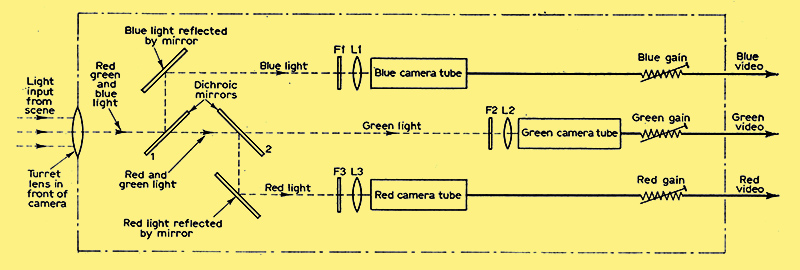|

The basic optical system of a colour camera.
On the front of the camera is the turret lens which receives the light from the scene in the studio. Now, when the light enters the camera, it passes through the first 'dichroic mirror'. This is a remarkable device since it allows red and green light to pass through it, and instead of passing blue light as well it blocks this and reflects it.
Thus we see that the blue light of the scene is directed towards a mirror. This is an ordinary flat mirror (with a little correction) which reflects the blue light through 90° and puts it on to the line of the 'blue' camera tube. Before arriving at the tube, the light passes through the blue filter F1 and the focusing lens L1. The blue separation of the colour scene is, therefore, projected upon the camera tube in the ordinary way.
The second dichroic mirror thus receives red and green light from the first one, and it passes green and reflects red. The green light from the scene arrives at the 'green' camera tube via the green filter F2 and the focusing lens L2, and the green separation of the colour scene reaches the camera tube.
The red light from the second dichroic mirror is reflected through 90° by a second mirror and is directed to the 'red' camera tube through the red filter F3 and the focusing lens L3 and, as before, the red separation of the scene is projected on to the tube.
|